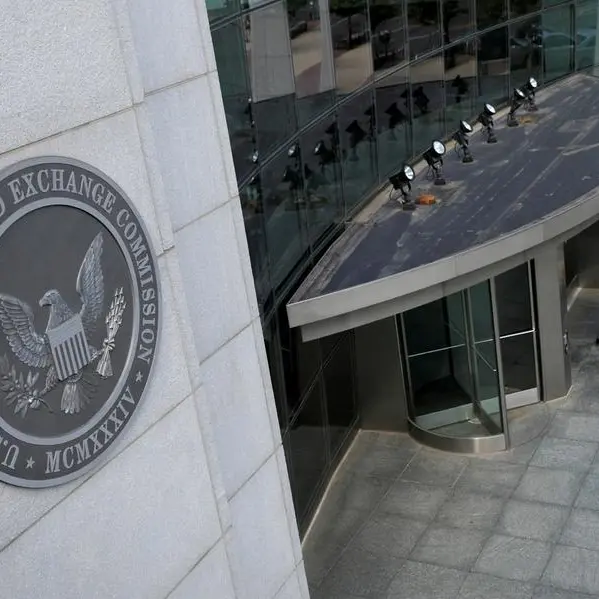PHOTO
In this photo illustration of the litecoin, ripple and ethereum cryptocurrency 'altcoins' sit arranged for a photograph on April 25, 2018 in London, England. (Photo by Jack Taylor/Getty Images) Image used for illustrative purpose.
This article delves into the pivotal role of leading and lagging indicators in cryptocurrency analysis, shedding light on how they can be wielded effectively while also acknowledging their inherent constraints. In the midst of this ever-evolving crypto landscape, staying abreast of the latest trends and tools becomes paramount. Individuals seeking to elevate their cryptocurrency analysis expertise may find value in exploring resources such as the quantum-momentum.com to navigate this dynamic domain more effectively.
Understanding Cryptocurrency Indicators
Explanation of Leading Indicators
Leading indicators are critical tools for traders seeking to predict future price movements. These indicators precede market trends, providing early signals of potential changes in the market. They are typically oscillators and momentum indicators that help traders identify overbought or oversold conditions.
Definition and Characteristics
Leading indicators are quantitative metrics that analyze historical price and volume data to forecast potential price changes. They often oscillate between specific values and generate signals based on preset conditions.
Examples of Leading Indicators
- Relative Strength Index (RSI): Measures the strength and speed of a price movement.
- Moving Average Convergence Divergence (MACD): Identifies changes in trend momentum.
- Stochastic Oscillator: Helps determine overbought and oversold conditions.
Explanation of Lagging Indicators
Lagging indicators, on the other hand, are primarily used to confirm existing market trends. They follow price movements and are often referred to as trend-following indicators. Lagging indicators are valuable for traders looking to assess the strength and duration of a trend.
Definition and Characteristics
Lagging indicators are data points that rely on past price and volume information. They smooth out market noise and offer a more stable perspective of the market’s direction.
Examples of Lagging Indicators
- Moving Averages: Smooth price data to identify trends and support/resistance levels.
- Bollinger Bands: Measure volatility and identify potential reversal points.
The Role of Leading Indicators in Cryptocurrency Analysis
Identifying Potential Trend Reversals
Leading indicators are invaluable for spotting potential trend reversals. For example, when the RSI crosses above 70, it suggests an overbought condition, indicating a potential reversal from an uptrend to a downtrend. Conversely, an RSI below 30 suggests an oversold condition, hinting at a potential upward reversal.
Analyzing Market Momentum
Traders use leading indicators to gauge market momentum. The MACD, for instance, tracks the difference between two moving averages, providing insight into the strength and direction of a trend. A rising MACD histogram indicates increasing momentum, while a declining histogram suggests waning momentum.
Using Leading Indicators for Entry and Exit Points
Leading indicators help traders pinpoint entry and exit points. When a leading indicator generates a buy signal, it may indicate an opportune moment to enter a trade. Conversely, a sell signal can suggest a suitable exit point. However, traders must consider other factors, such as market sentiment and news events, when making decisions.
Case Studies Showcasing Successful Predictions
To illustrate the effectiveness of leading indicators, let’s examine a case study. In August 2021, Bitcoin’s RSI crossed above 70, signaling an overbought condition. Subsequently, Bitcoin experienced a price correction, reinforcing the RSI’s predictive value.
The Role of Lagging Indicators in Cryptocurrency Analysis
Confirming Trends and Trend Strength
Lagging indicators are crucial for confirming trends and assessing their strength. Moving averages, for instance, provide a smoothed trend line that traders can use to identify the direction of the market. A rising moving average indicates an uptrend, while a falling one suggests a downtrend.
Identifying Support and Resistance Levels
Lagging indicators are helpful in identifying key support and resistance levels. Traders use these levels to make decisions about buying or selling. Bollinger Bands, for example, consist of a central moving average and two outer bands that represent standard deviations. When prices touch the upper band, it may indicate overbought conditions, while touching the lower band may signal oversold conditions.
Utilizing Lagging Indicators for Risk Management
Lagging indicators also play a vital role in risk management. They help traders set stop-loss and take-profit levels based on historical price data and support/resistance levels. This helps minimize potential losses and maximize gains.
Real-World Examples of Lagging Indicator Applications
Consider a real-world example involving Ethereum’s price trend in early 2021. The 50-day moving average acted as strong support, with Ethereum’s price consistently bouncing off it during its bull run. Traders who used this lagging indicator to set stop-loss levels were able to protect their gains effectively.
Combining Leading and Lagging Indicators
The Power of Synergy in Cryptocurrency Analysis
While leading and lagging indicators serve different purposes, combining them can enhance trading strategies. Leading indicators provide early signals, and lagging indicators confirm trends, leading to more confident trading decisions.
Developing a Comprehensive Trading Strategy
A well-rounded trading strategy often includes a combination of leading and lagging indicators, along with other factors such as market sentiment analysis and news events. By integrating multiple sources of information, traders can reduce the risk of false signals.
Risk Mitigation Through Indicator Convergence
When leading and lagging indicators align, it strengthens the signal’s reliability. For example, if the RSI indicates overbought conditions while the price touches the upper Bollinger Band, it may provide a stronger sell signal than either indicator alone.
Case Studies Demonstrating Successful Hybrid Approaches
Examining cases where traders successfully combined leading and lagging indicators can help illustrate the benefits of a hybrid approach. For instance, a trader using the MACD for trend direction and the 50-day moving average for support and resistance levels could have made informed decisions during Bitcoin’s volatile price swings in 2021.
Challenges and Limitations
Common Pitfalls When Relying on Indicators
Traders should be aware of common pitfalls, such as over-reliance on indicators, which can lead to missed opportunities or false signals. It’s essential to consider indicators as just one piece of the trading puzzle.
Market Volatility and Indicator Accuracy
Cryptocurrency markets are notoriously volatile, which can challenge indicator accuracy. Rapid price swings can trigger false signals, emphasizing the need for risk management strategies.
The Importance of Continuous Analysis and Adaptation
Cryptocurrency markets evolve rapidly, and what worked yesterday may not work tomorrow. Traders must continuously analyze and adapt their strategies to stay ahead.
Tools and Resources for Cryptocurrency Analysis
Overview of Popular Cryptocurrency Analysis Platforms
Several platforms offer comprehensive cryptocurrency analysis tools, including TradingView, CoinGecko, and CryptoCompare. These platforms provide access to a wide range of indicators and charting options.
Availability of Leading and Lagging Indicators in Trading Software
Most trading software and platforms offer a variety of leading and lagging indicators for users to incorporate into their analysis. Traders should familiarize themselves with the available tools to make informed decisions.
Sources for Cryptocurrency Market Data
Reliable sources for cryptocurrency market data include exchanges like Binance, Coinbase, and Kraken, as well as dedicated market data providers like CoinMarketCap and CoinGecko. These sources offer historical and real-time data for analysis.
Conclusion
In conclusion, leading and lagging indicators are valuable tools in cryptocurrency analysis, each serving distinct roles. Leading indicators help predict potential price movements, while lagging indicators confirm trends and support risk management. By combining these indicators judiciously and considering market conditions, traders can develop effective strategies and make informed decisions in the dynamic world of cryptocurrencies.
© Copyright The Zimbabwean. All rights reserved. Provided by SyndiGate Media Inc. (Syndigate.info).




















